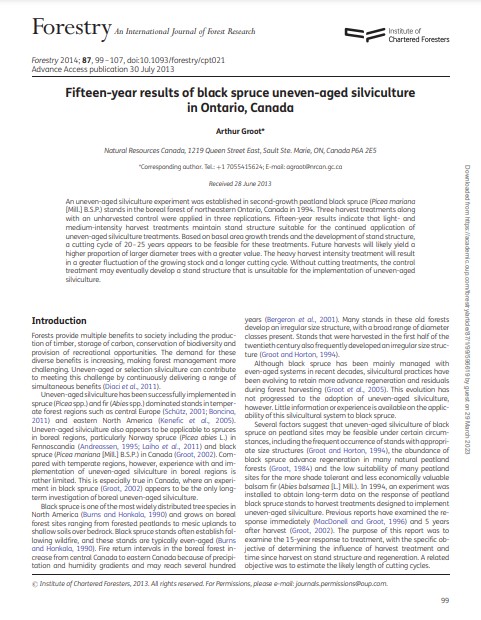Fifteen-year results of black spruce uneven-aged silviculture in Ontario, Canada
Bosque Modelo:
Lake Abitibi
Temática:
Gestión forestal
Tipo de documento:
Artículo científico
Resumen
An uneven-aged silviculture experiment was established in second-growth peatland black spruce (Picea mariana [Mill.] B.S.P.) stands in the boreal forest of northeastern Ontario, Canada in 1994. Three harvest treatments along with an unharvested control were applied in three replications. Fifteen-year results indicate that light- and medium-intensity harvest treatments maintain stand structure suitable for the continued application of uneven-aged silviculture treatments. Based on basal area growth trends and the development of stand structure, a cutting cycle of 20–25 years appears to be feasible for these treatments. Future harvests will likely yield a higher proportion of larger diameter trees with a greater value. The heavy harvest intensity treatment will result in a greater fluctuation of the growing stock and a longer cutting cycle. Without cutting treatments, the control treatment may eventually develop a stand structure that is unsuitable for the implementation of uneven-aged silviculture.
Información Bibliográfica
Autor:
Groot, Arthur
Revista:
FORESTRY
Año:
2014
N°:
1
País :
Canadá
Páginas:
99 - 107
Volumen:
87
Idioma:
Ingles
Palabras claves
Silviculture, forest, model forest, Canada





